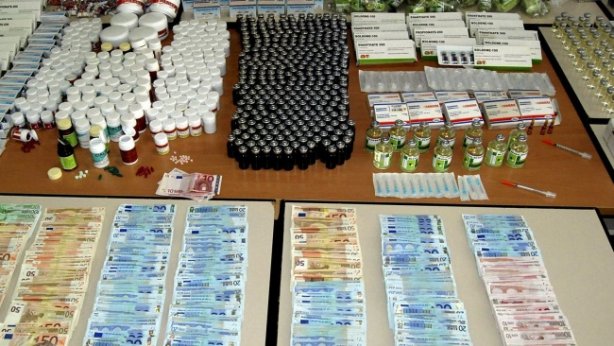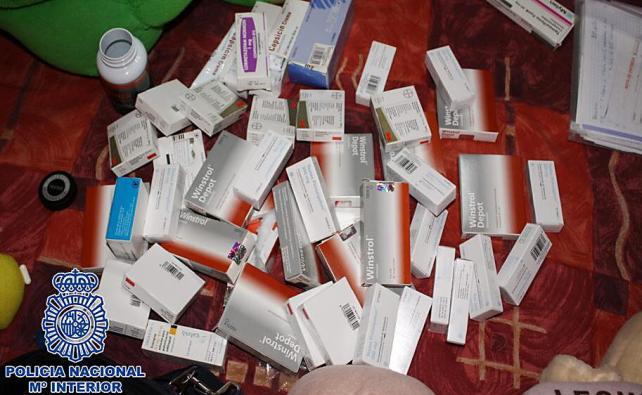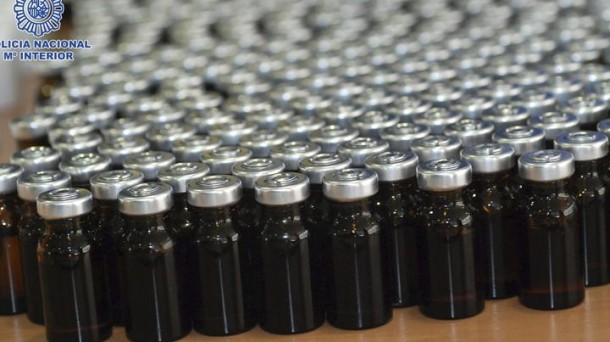doping in sports
Doping in Sports
 Almost seven years after police discovered hundreds of bags of blood in a Madrid clinic during the Operacion Puerto doping investigation, Dr Eufemiano Fuentes and five others will finally go on trial, starting January 28, 2013.
Almost seven years after police discovered hundreds of bags of blood in a Madrid clinic during the Operacion Puerto doping investigation, Dr Eufemiano Fuentes and five others will finally go on trial, starting January 28, 2013.
Doping was not a crime in Spain at the time of the raids and so the Puerto six have been accused of crimes against public health.
Dr Fuentes himself confirmed in the media that he had worked with athletes from several sports, including tennis, athletics, boxing, football as well as cyclists. Officially closed in September 2008, Operación Puerto has been said to involve more than 200 athletes, but only some 50 cyclists have been named as clients. It is realistic to think that other names will be named during this trial.
All this has come about from "Operation Greyhound" (Operacion Galgo) in 2009, which is the second high-profile organized effort against doping in Spain involving Fuentes. The first was Operation Mountain Pass (Operacion Puerto) in 2006, which was mostly known for having caught out a few high-profile cyclists for doping with Fuentes' aid. Now in Januari 2013 the police arrested the former cyclist José Luis Martínez for allegedly trafficking in banned performance-enhancing substances, police said that they had found more than 300,000 doses of banned substances in a secret laboratory in the southeastern town of Molina de Segura. Substances included clenbuterol, primobolan, testovis, testosterone, proviron, growth hormones, ephedrine. This case is linked to both major doping operations mentioned before.
Fuentes made the claim that other sports besides cycling were involved. Operation Greyhound has already shown this to be the case with the World Champ Steeplechase runner Marta Dominguez being suspended. Fuentes' statement, which implies that doping was done by the Spanish national fottbal team, could hold some truth for sure. Not just with that team but other footballers and professionals from various sports (a cyclist called Manzano claimed during the time of Operacion Puerto that he saw footballers and tennis players at the clinic).
In the media we have seen numerous articles about cyclists and cycling. We as juicers know that almost every athlete on the Olympics etc etc uses banned substances. Shooters using beta-blockers. Cycling is used as a scape goat, but during the Olympics in Australia I saw swimmers sooo obvious on growth hormones.
Its time we face the truth, there is no such thing as a “clean” sport not with all that money involved. And even before that, people will do anything to win, just google.
We as bodybuilders know that pro-bodybuilders use AAS, but an enormous amount of “cosmetic “ users also take these means. Just google the historical timeline on spots doping. Its as old as competitive sport itself.
All these publicity and trials are done by fat frustrated fucks that where not athletic and popular during school and now want to get even. Just look at the witch hunt on Lance. And the disgusting system that makes people snitch their former team mates.
Thus we’ll let cycling rest here.
Operacion Puerto and soccer
 The French newspaper Le Monde was fined €15,000 after the Spanish supreme court decided its 2006 report linking FC Barcelona to the doping investigation Operación Puerto amounted to defamation.
The French newspaper Le Monde was fined €15,000 after the Spanish supreme court decided its 2006 report linking FC Barcelona to the doping investigation Operación Puerto amounted to defamation.
In 2009, a Spanish court had fined Le Monde €300,000 for naming FC Barcelona in relation to the case. At that time, the author of the feature, Stéphane Mandard, said, "I hope Spanish justice will have courage to see the truth come out".
In the appeal case, the Supreme Court decided to cut drastically the fine but confirmed the legal fault of the newspaper.
In December 2006, Le Monde published a report that linked Eufemiano Fuentes, the doctor who ran a Madrid clinic at which police found large quantities of banked blood and doping products, to Spanish football teams FC Barcelona, Real Madrid, FC Valence and Seville's Real Betis.
Operación Puerto has been said to involve more than 200 athletes, only 47 cyclist where named.
While Fuentes did not name football players or teams, Mandard said he had obtained from unnamed sources several documents allegedly showing doping programs for players on the 2005-2006 FC Barcelona team. That year was the most successful for the "Barça", which captured the Champions League and the UEFA Super Cup.
“El Mundo” published, that doctor Fuentes allegedly said:" if i would talk (confess), we would not have either of Euro Cup or World Cup title".
In 2001 Spanish international Pep Guardiola became the second Serie A player to test positive for nandrolone within the space of a week as the banned steroid returned to plague Italian football.
Lazio's Dutch international Jaap Stam tested positive for the controversial steroid and was given an immediate suspension from the game. That season nine players in Italy's top two divisions, including Juventus' Dutch international Edgar Davids and Lazio's Portuguese defender Fernando Couto, tested positive for nandrolone.
//fussballdoping.derwesten-recherche.org/en/2012/12/how-prevalent-are-drugs-in-soccer/
Operación Puerto and Tennis
 Now that Wayne Odesnik has been labeled the doping snitch trying to win favor with the ITF and getting his two year ban cut to one year. One cannot help but wonder who is on his list of tennis dopers and what information he leaked.
Now that Wayne Odesnik has been labeled the doping snitch trying to win favor with the ITF and getting his two year ban cut to one year. One cannot help but wonder who is on his list of tennis dopers and what information he leaked.
Doping and sports have always had a negative relationship but it came to a head in the infamous, "Operacion Puerto". Operacion Puerto involved many Spanish professional cyclists being found with performance enhancers, steriods, and blood cleaners provided by Spanish Doctor Eufemiano Fuentes. One of the performing enhancing drugs that was identified was EPO which increases one's endurance through producing more red blood cells that allow the retention of more oxygen. How does this implicate tennis?
Though the Spanish government and the ITF said that no tennis players were part of a Spanish investigation about doping abuse- it is very fishy that this only came after the release of other names had been blocked by a Spanish judge.
I mean watching Rafael Nadal playing 5 set matches back to back is astonishing. I don't want to diminish his skills but it's perfectly healthy to question super human abilities. One can also understand why such a high profile would be protected by all of those in power.
I know that these guys are tested thoroughly and often but I also know that the tests don't pick up all the drugs.
"For some time now WADA has made it clear that testing and analysis alone is not sufficient to expose the doping of athletes who have the support of sophisticated and unscrupulous individuals. The evidence gathered by USADA in the Armstrong case is proof of that, as it is almost entirely based on non-analytical data.
"It has always been incumbent on anti-doping organizations to undertake a more coherent approach to widespread allegations of doping, and it is not sufficient to claim that enough was done just because testing did not lead to analytical violations.
'The fact the World Anti-Doping Code only came into force in 2004 is not a valid excuse for an organization failing to act on evidence of widespread doping, and nor is the Statute of Limitations contained within the Code an excuse not to investigate evidence of doping that dates back longer than eight years."
Players caught with steriods: Juan Ignacio Chela, Guillermo Coria, Sesil Karatantcheva, Bodhan Ulihrach, Petr Korda, Ignacio Truyol, Petr Korda
//tennishasasteroidproblem.blogspot.nl/2012/10/what-can-you-say.html
Operacion Galgo
Operacion Galgo, or “Operation Greyhound,” the Spanish investigation into an alleged blood doping ring involving Dr. Eufemiano Fuentes has been closed due to “a lack of evidence.”
In an order dated May 24 and released on Wednesday, Judge Mercedes Perez dismissed the charges against the twelve defendants. The Madrid Provincial Court had already ruled in March that the telephone interceptions and searches carried out as part of the probe were invalid.
“There are no reasonable grounds for having committed the acts which gave rise to the formation of this case,” Perez wrote in his dismissal of the proceedings, according to AFP.
Operacion Galgo first entered the public domain in December 2010, when Spanish police arrested 14 people, including Fuentes, his sister Yolanda and the middle-distance runner Marta Dominguez.
Fuentes was previously at the centre of the Operacion Puerto blood doping investigation, which broke ahead of the 2006 Tour de France and eventually led to sanctions against a number of riders, including Jan Ullrich, Ivan Basso, Michele Scarponi and Alejandro Valverde.
Operacion José Luis Martínez
Spanish police arrested a former cyclist Wednesday 24 Januari 2013 for allegedly trafficking in banned performance-enhancing substances in a case linked to a major doping investigation.
Miguel Angel Adan, a spokesman for Spain's anti-doping agency, told The Associated Press that it was looking into the arrest of former cyclist Jose Luis Martinez for allegedly selling banned doping substances along with three other detainees.
In 2006, the Operation Puerto investigation linked Martinez to doctor Eufemiano Fuentes, one of six defendants set to stand trial from Monday.
In a statement released Wednesday, police said that they had found more than 300,000 doses of banned substances in a secret laboratory in the southeastern town of Molina de Segura. Substances included clenbuterol, primobolan, testovis, testosterone, proviron, growth hormones, ephedrine, equipment for making vials and pills and a blood plasma centrifuge.
Police said in addition to investigations started in Spain in 2010, they also received information from Swedish authorities regarding the "interception of a package sent from the town of Molina de Segura containing illicit products."
Besides charging the four detainees with crimes against the public health, police raided five locations in the southern provinces of Murcia and Alicante.
In 2006, Operation Puerto implicated more than 50 cyclists — including Alberto Contador, Ivan Basso and Jan Ullrich — in the use of performance-enhancing substances.
- Login to post comments


